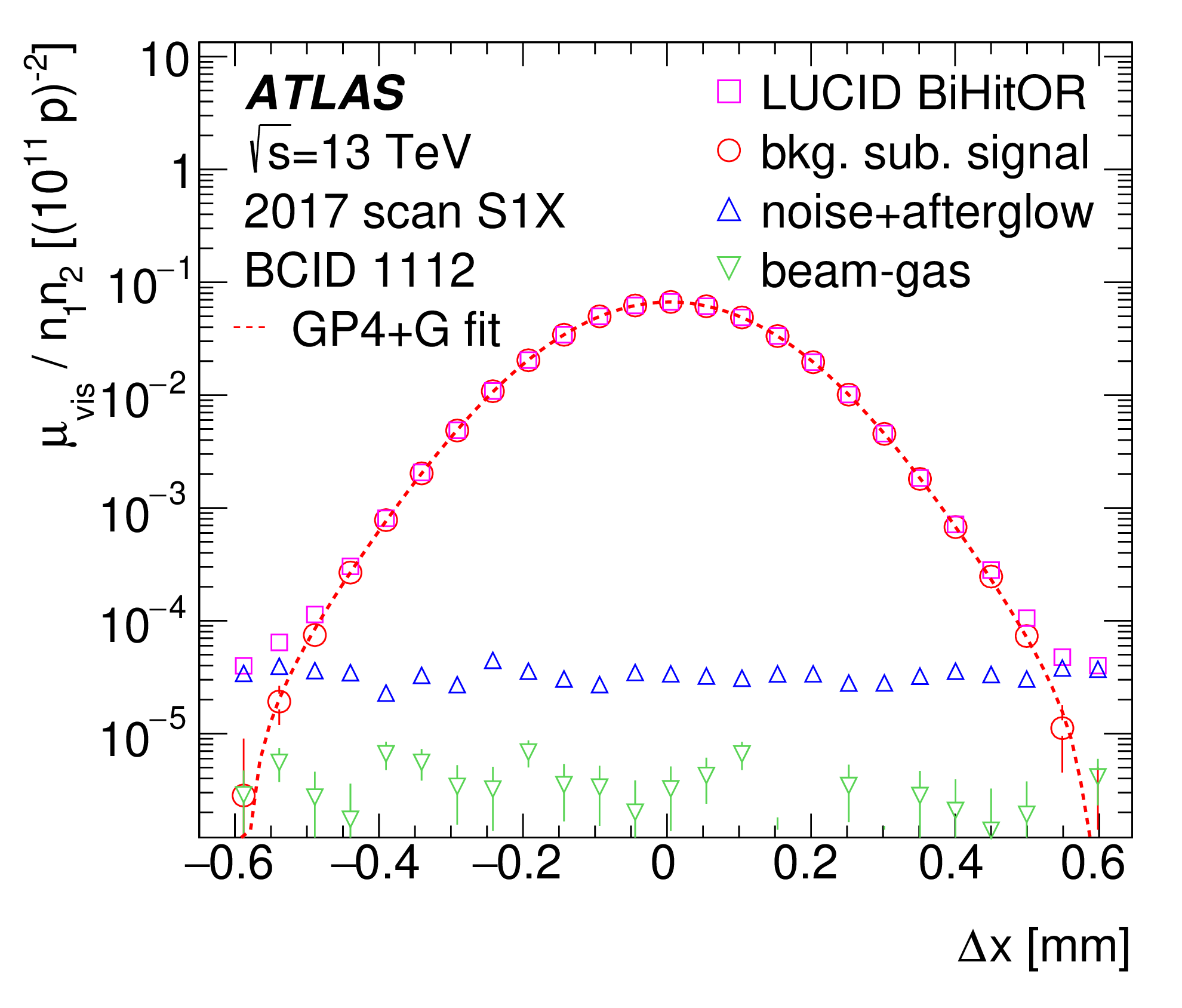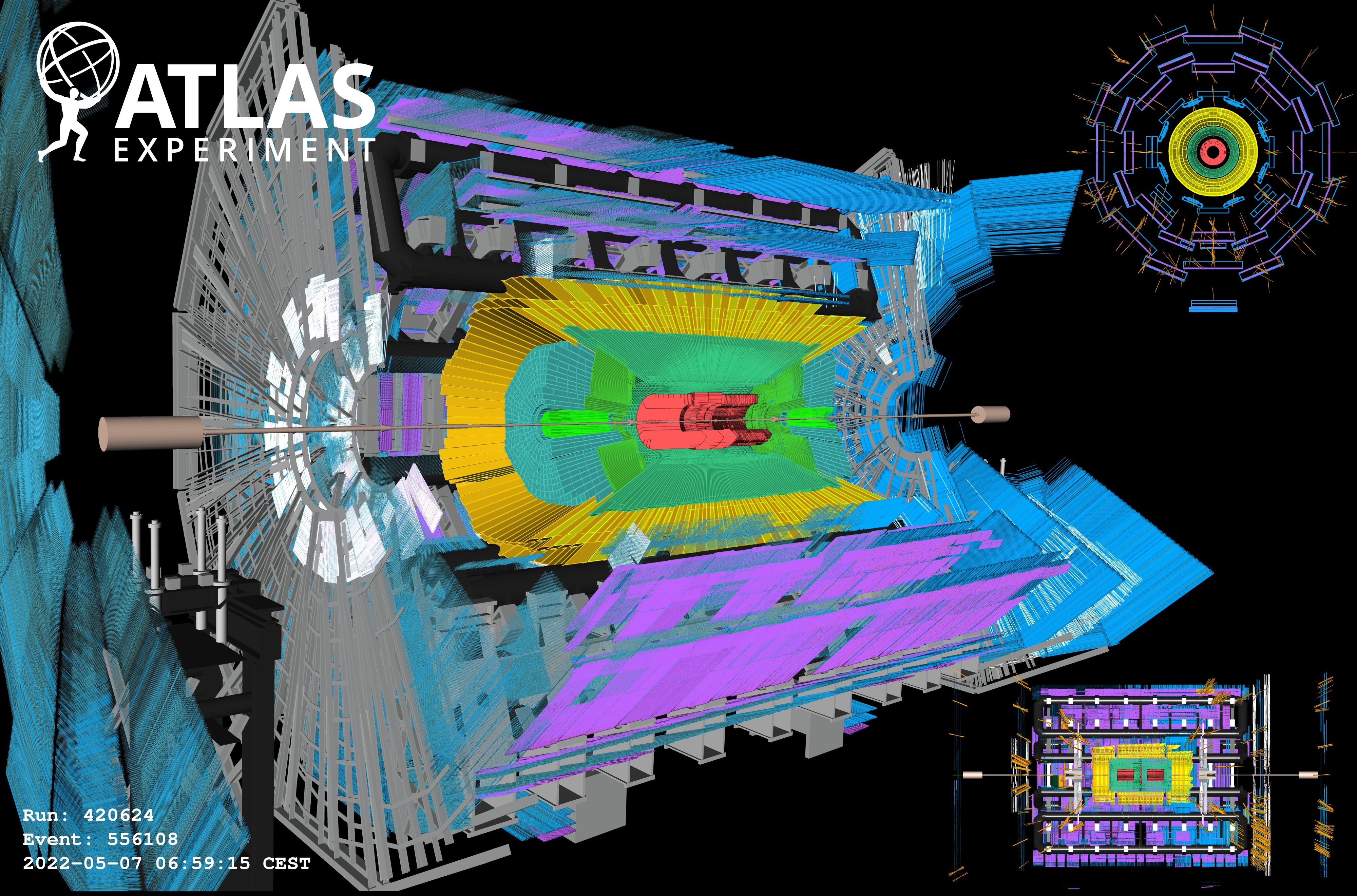Splashes for synchronization
15 April 2015 | By
ATLAS uses "beam splash" events to provide simultaneous signals to large parts of the detector, and verify that the readout of different detectors elements are fully synchronized. After the first 2015 Large Hadron Collider beam circulation on Easter Sunday, a run dedicated to taking beam splash events was set up on Tuesday evening, 7 April. The resulting beam splash events shown in these images demonstrate the resulting energy deposition in ATLAS.

The beam splashes are part of the final preparations before protons collide again in the heart of the detector. But what is a beam splash and how is it ‘splashed' in ATLAS?
When the LHC is running, bunches of protons are accelerated in the 27 km ring in opposite directions and made to collide inside ATLAS. For a beam splash, a bunch of protons hits a collimator located along the beam pipe which is intentionally closed upstream of the detector. These particles create a large shower, much like a giant wave, illuminating all the subdetectors as the precise signal shape and timestamp of the particles passing through are recorded. Physicists use this data to "time-in" and synchronise all of the detector elements of ATLAS to the LHC's clock.
Precise timestamps are essential for reconstructing recorded collision data which physicists use to study the direction, energy and momentum of particles and identify them.

If the beam splash is likened to a giant wave, the different subdetectors are cameras placed at different points to take multiple simultaneous timestamped pictures of the surging waters. These timestamps can be used to reconstruct the wave's surge and peak at specific instances. How precisely the cameras are coordinated to take pictures could determine the accuracy of the result and understanding of the phenomenon.
In Run 1, proton collisions were timed to take place every 50 nanoseconds. In Run 2, with higher energy and increased luminosity, the clock has doubled to collisions timed at every 25 nanoseconds. ATLAS' subdetectors must be calibrated to record the collision times as precisely as possible.

The timing of the beam splash events does not correspond to that of beam collisions as the shower of particles would pass through the closest half earlier. The difference needs to be taken into account and the timing recorded once the particles pass the interaction point is used to calibrate and align. To improve accuracy, beams are splashed, therefore, from both sides of the detector.
Striving to achieve the highest possible precision is a long and continual process. Over the last year, during its appointed Milestone Weeks, ATLAS has been slowly integrating its subdetectors to align and calibrate the detector's performance as a whole using cosmic rays. However, unlike planned beam splashes, cosmic rays are random muon particles, and cannot be relied on to calibrate the entire detector's timing with the high precision required for experiments.
The LHC continues to circulate proton beams in preparation for the collisions. Meanwhile, ATLAS is fine-tuning is subdetectors 24/7, testing the trigger and data acquisition systems, and monitoring the circulating beams before Run 2's first proton collisions take place.



